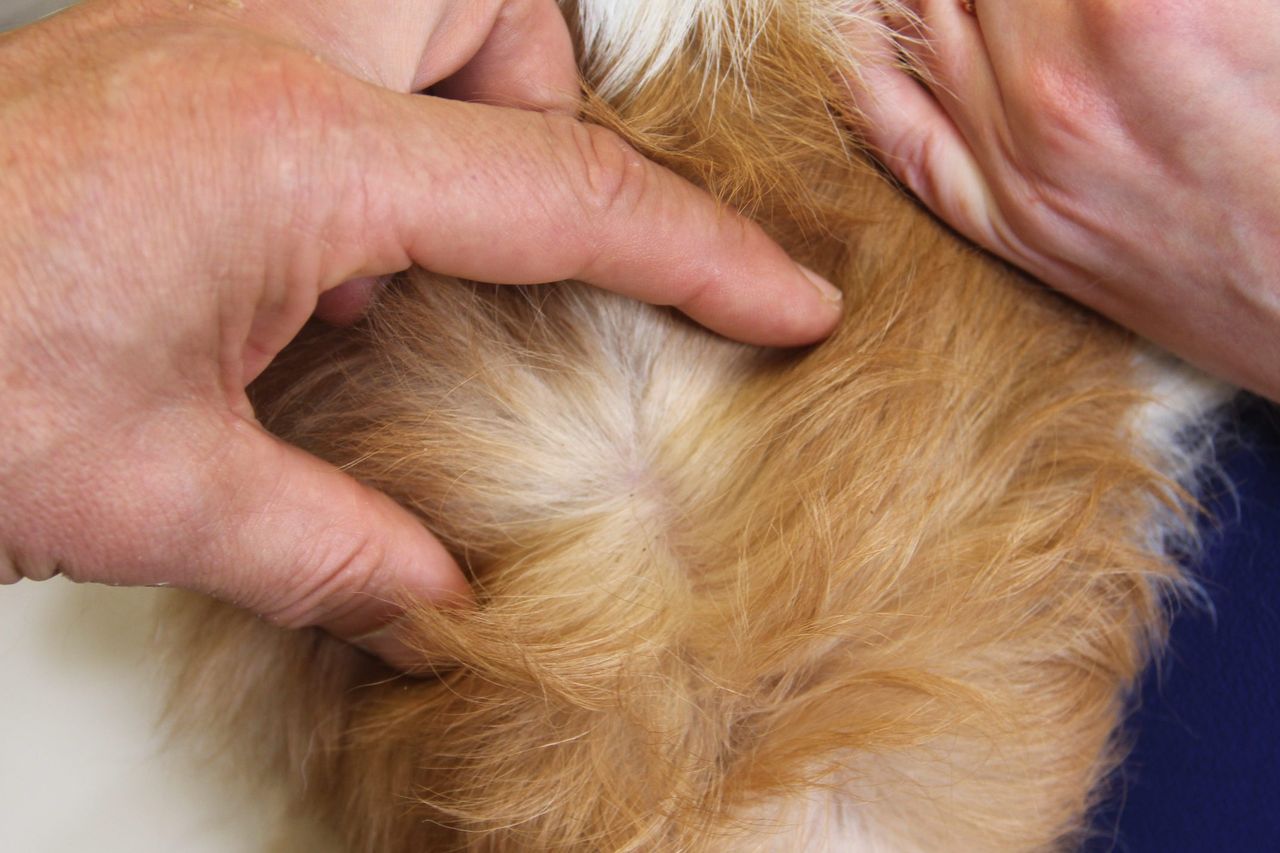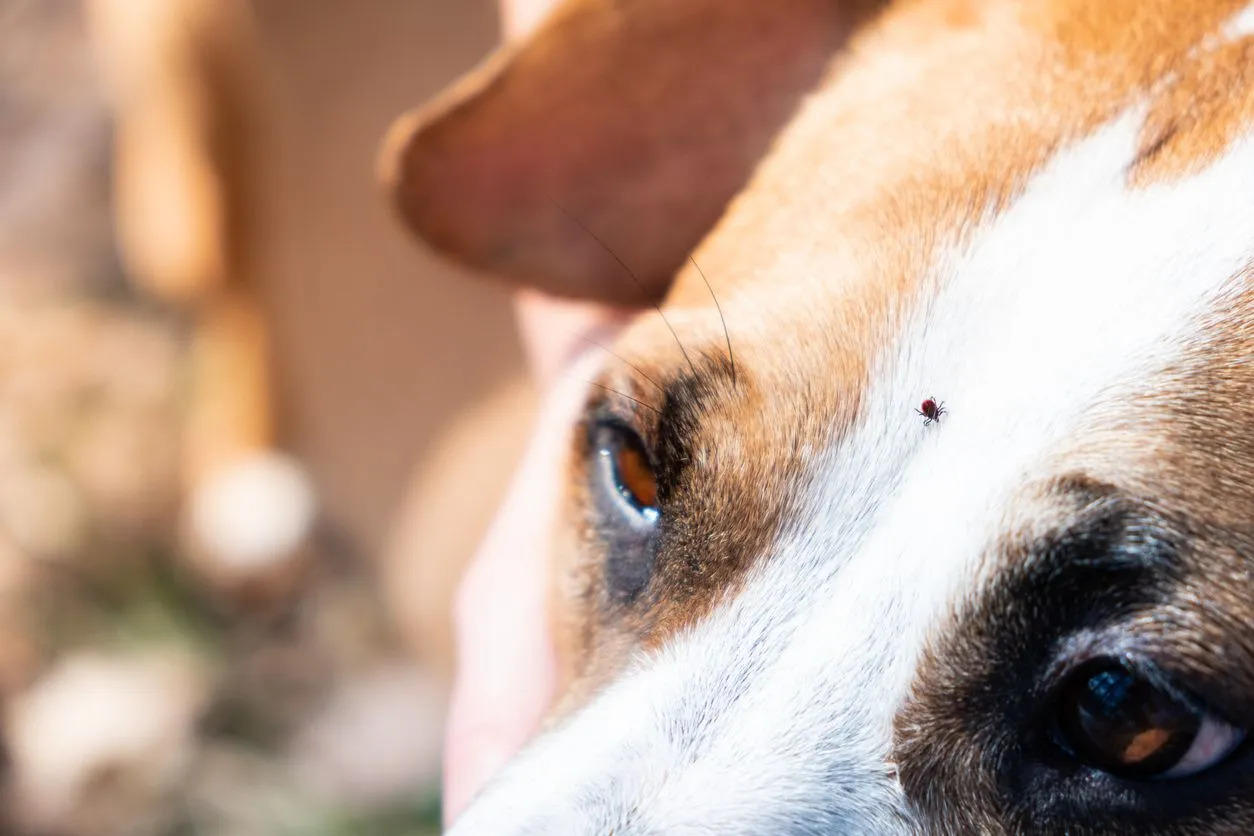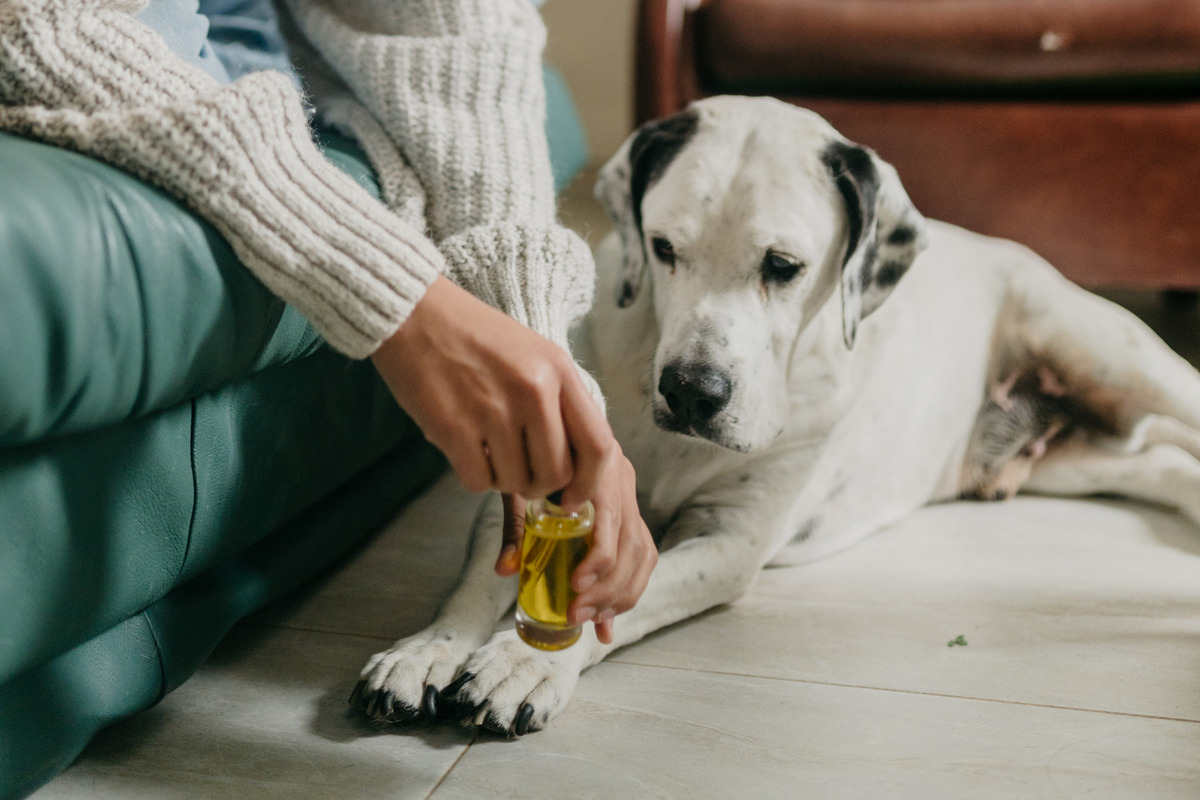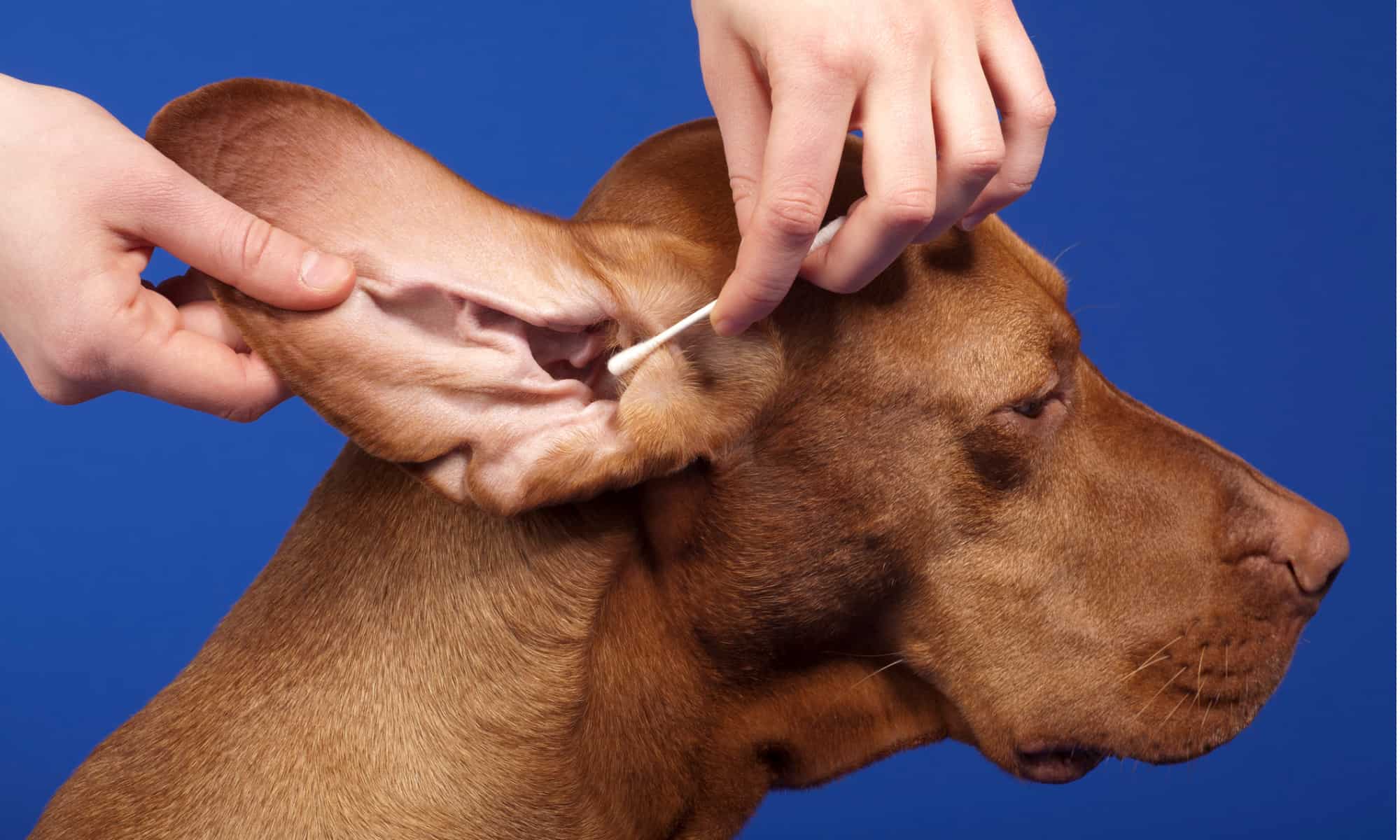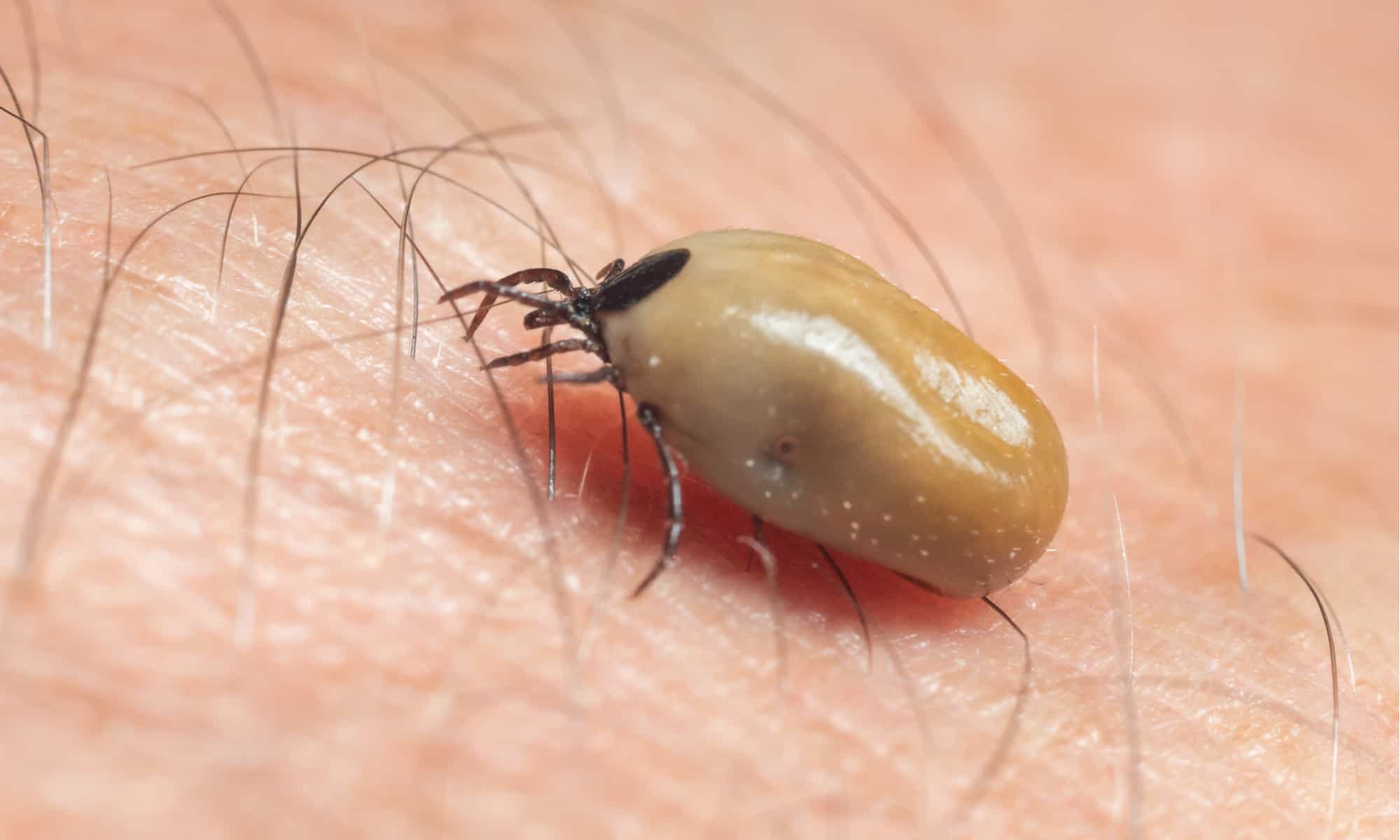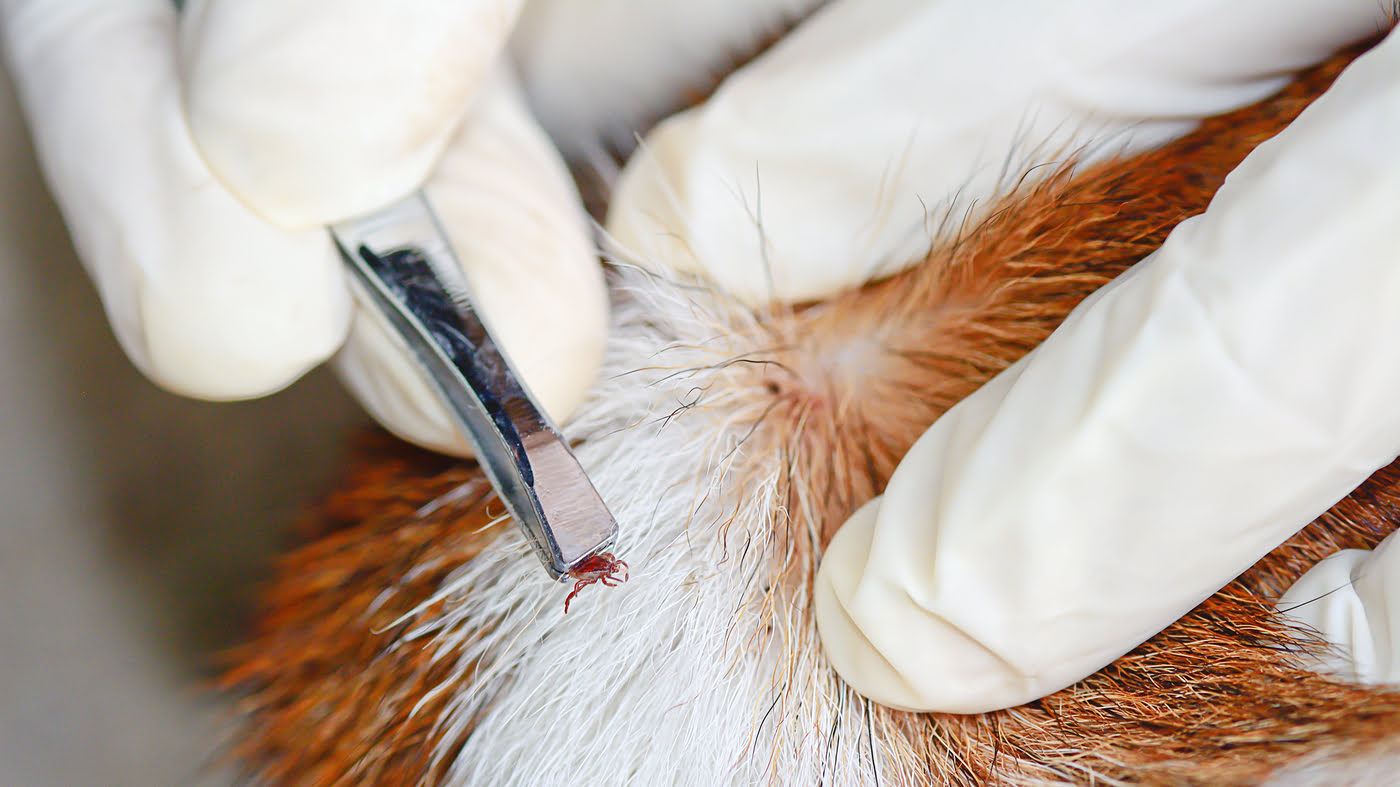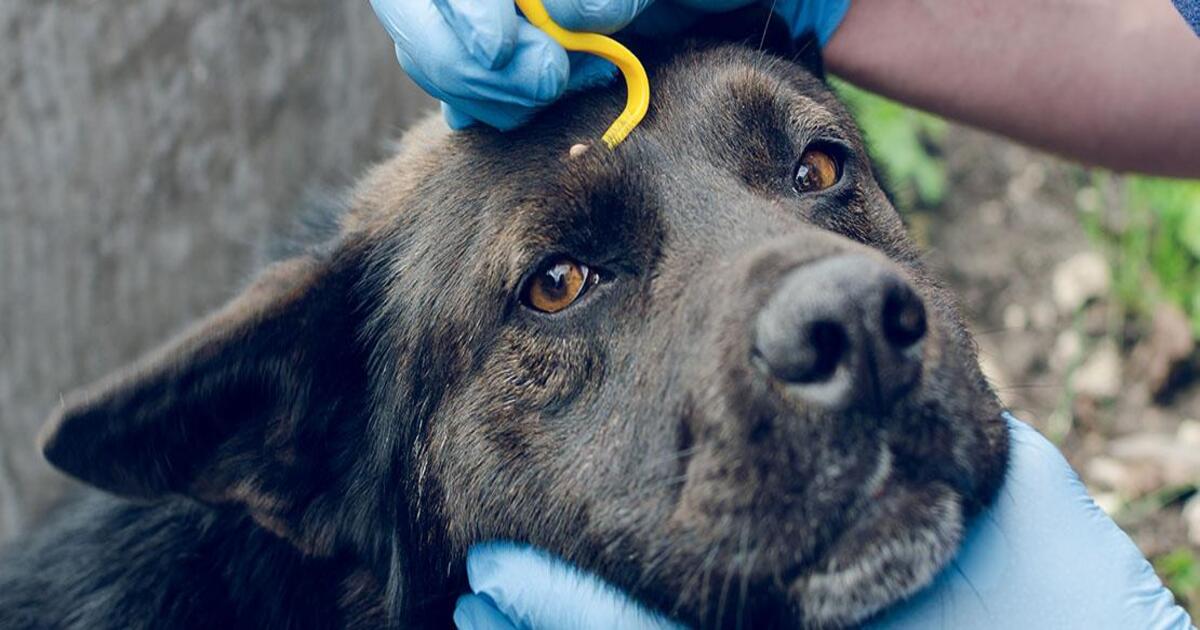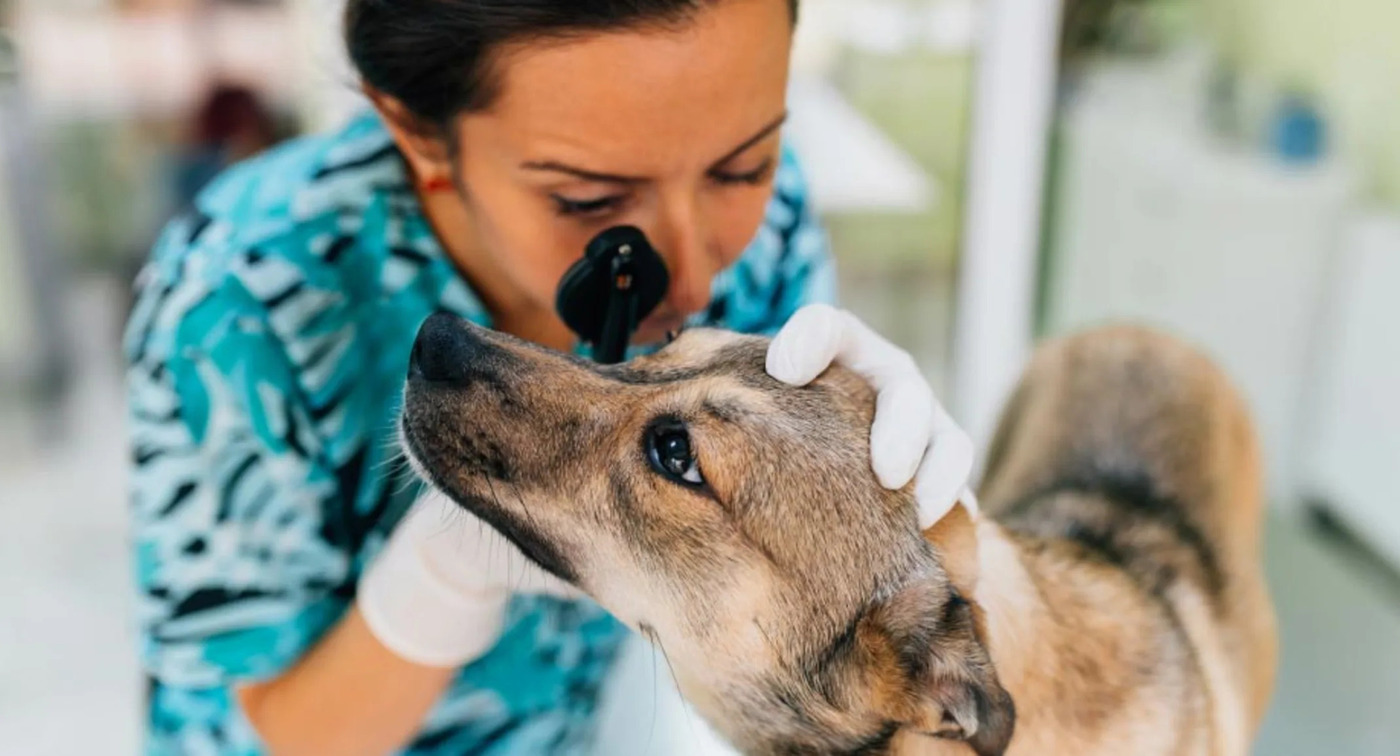Home>Health & Wellness>Common Health Issues>What To Do For Red Mark Where Tick Was On Dog
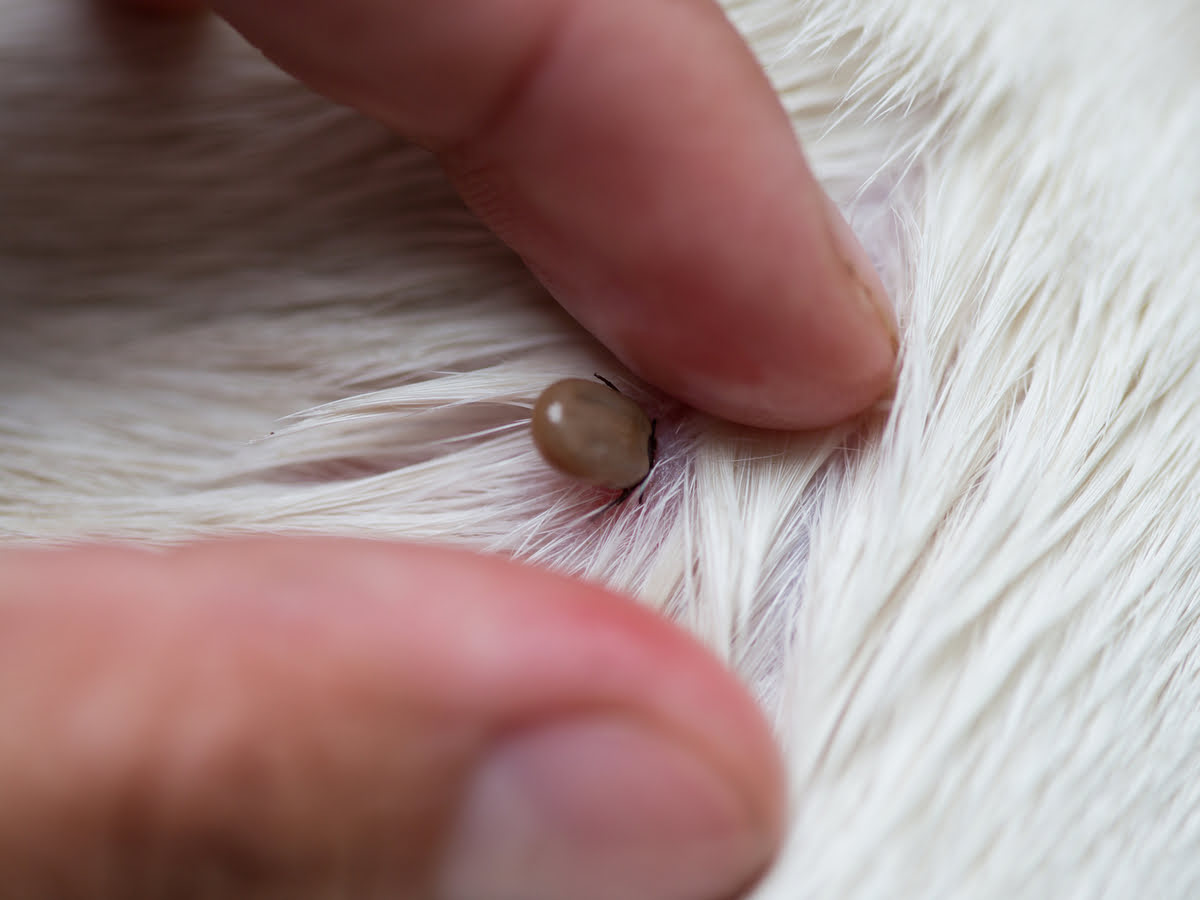

Common Health Issues
What To Do For Red Mark Where Tick Was On Dog
Modified: February 21, 2024
Learn how to care for your dog's common health issues, including what to do for a red mark where a tick was found. Keep your furry friend healthy and happy!
(Many of the links in this article redirect to a specific reviewed product. Your purchase of these products through affiliate links helps to generate commission for Pawsomeoldies.com, at no extra cost. Learn more)
Table of Contents
Introduction
Discovering a red mark where a tick was on your dog can be a cause for concern. Ticks are notorious for transmitting diseases such as Lyme disease, ehrlichiosis, and anaplasmosis, making it crucial to address the situation promptly. As a responsible pet owner, it's essential to take the necessary steps to ensure your dog's well-being and prevent any potential health complications.
Upon noticing a red mark where a tick was attached to your dog, it's natural to feel a sense of urgency. However, it's important to approach the situation calmly and methodically. By understanding the steps involved in identifying, removing, and treating the red mark, you can effectively address the issue and minimize any associated risks. Additionally, implementing preventive measures can help safeguard your dog from future tick bites, promoting their overall health and happiness.
In the following sections, we will delve into the process of identifying the red mark, safely removing the tick, treating the affected area, and implementing preventive measures to protect your furry companion. By gaining a comprehensive understanding of these essential steps, you can confidently navigate this common health concern and ensure the well-being of your beloved pet.
Read more: Where Do Dogs Get Ticks?
Identifying the Red Mark
Identifying a red mark where a tick was on your dog is the first crucial step in addressing this common health issue. Upon discovering the presence of a red mark, it's essential to closely examine the affected area to determine the extent of the mark and any associated symptoms. The red mark may appear as a small, inflamed area on your dog's skin, often accompanied by mild swelling and tenderness. It's important to note that the appearance of the red mark can vary depending on factors such as the type of tick and the duration of attachment.
When inspecting the red mark, pay close attention to any signs of irritation or discomfort exhibited by your dog. They may exhibit behaviors such as excessive scratching or licking of the affected area, indicating potential discomfort. Additionally, observe the color and size of the red mark, as well as any changes in your dog's behavior or overall well-being.
In some cases, the red mark may be accompanied by a dark central area, indicating the site where the tick was attached. This characteristic "bullseye" appearance can serve as a visual indicator of a recent tick bite. However, it's important to note that not all tick bites result in this distinct pattern, making it essential to thoroughly assess the red mark and its surrounding area.
Furthermore, consider the location of the red mark on your dog's body. Ticks often favor areas such as the ears, neck, and limbs, where the skin is thinner and more accessible. By identifying the specific location of the red mark, you can gain valuable insights into the potential source of the tick bite and tailor your approach accordingly.
In summary, identifying the red mark where a tick was on your dog involves a thorough assessment of the affected area, including its size, color, location, and any associated symptoms. By carefully observing these key indicators, you can gain a clearer understanding of the situation and proceed with the necessary steps to address the red mark and ensure your dog's well-being.
Removing the Tick
When it comes to removing a tick from your dog, it's essential to approach the process with care and precision. The presence of a tick can pose potential health risks for your furry companion, making prompt and proper removal a top priority. Here's a detailed guide on safely and effectively removing a tick from your dog:
Step 1: Gather the Necessary Tools
Before initiating the tick removal process, gather the essential tools required for the task. These may include fine-tipped tweezers, gloves, rubbing alcohol, and antiseptic ointment. Having these items readily available will streamline the removal process and ensure that you can address the situation promptly.
Step 2: Prepare the Area
Choose a well-lit and comfortable area to perform the tick removal procedure. This may involve securing your dog in a calm and controlled environment to minimize any potential stress or discomfort during the process. Additionally, consider enlisting the assistance of a family member or friend to help keep your dog calm and steady during the procedure.
Read more: Where Are American Dog Ticks Found?
Step 3: Use Fine-Tipped Tweezers
With the fine-tipped tweezers in hand, carefully grasp the tick as close to your dog's skin as possible. It's crucial to ensure a firm and steady grip on the tick to avoid leaving any parts of the tick embedded in the skin. Avoid using your fingers to remove the tick, as this can increase the risk of improper extraction.
Step 4: Remove the Tick
Gently and steadily pull the tick straight out, using a consistent and even pressure. Avoid twisting or jerking movements, as these actions can cause the tick's mouthparts to break off and remain lodged in the skin. Ensure that the entire tick is removed intact, minimizing the risk of potential complications.
Step 5: Clean and Disinfect
After successfully removing the tick, disinfect the affected area on your dog's skin with rubbing alcohol. This helps to eliminate any remaining bacteria and reduce the risk of infection. Following this, apply a small amount of antiseptic ointment to the site to promote healing and prevent any potential irritation.
By following these steps, you can safely and effectively remove a tick from your dog, minimizing the associated health risks and promoting their overall well-being. It's important to monitor the affected area following the tick removal and seek veterinary attention if any concerning symptoms arise. Additionally, implementing preventive measures such as tick control products can help safeguard your dog from future tick encounters, ensuring their continued health and happiness.
Treating the Red Mark
Upon identifying a red mark where a tick was on your dog, prompt and appropriate treatment is essential to promote healing and minimize any potential complications. The process of treating the red mark involves a combination of gentle care, monitoring, and proactive measures to ensure your dog's well-being. Here's a comprehensive guide on effectively treating the red mark to support your furry companion's recovery:
Read more: Where Do Fleas Like To Be On Dogs
Step 1: Gentle Cleaning
Begin the treatment process by gently cleaning the red mark with mild soap and warm water. Use a soft cloth or cotton pad to carefully cleanse the affected area, removing any dirt or debris that may have accumulated. Avoid using harsh chemicals or abrasive materials, as these can cause further irritation to your dog's skin. Thorough yet gentle cleaning sets the foundation for subsequent treatment steps and promotes a clean and conducive environment for healing.
Step 2: Application of Soothing Ointment
After cleaning the red mark, consider applying a soothing ointment specifically formulated for skin irritations. Look for products containing natural ingredients such as aloe vera or calendula, known for their calming and healing properties. The application of a soothing ointment can help alleviate any discomfort associated with the red mark and support the skin's natural healing process.
Step 3: Monitoring and Observation
Following the initial treatment steps, it's crucial to closely monitor the red mark and observe any changes in its appearance or your dog's behavior. Keep an eye out for signs of persistent redness, swelling, or increased sensitivity in the affected area. Additionally, observe your dog's overall well-being, noting any changes in appetite, energy levels, or mobility. Regular monitoring allows you to promptly identify any concerning developments and take appropriate action as needed.
Step 4: Consultation with a Veterinarian
If the red mark shows signs of persistent inflammation or if your dog displays any unusual symptoms, it's advisable to seek professional guidance from a veterinarian. A veterinary professional can provide tailored recommendations for further treatment and assess the potential need for additional interventions. They can also offer valuable insights into the specific care requirements based on your dog's individual health status and any underlying conditions.
Read more: What Can A Tick Do To A Dog
Step 5: Preventive Measures
In addition to treating the red mark, implementing preventive measures is essential to safeguard your dog from future tick bites and associated health concerns. Explore options such as tick control products, regular grooming practices, and environmental management strategies to minimize the risk of tick encounters. By taking proactive steps to prevent future incidents, you can contribute to your dog's long-term well-being and reduce the likelihood of recurring red marks from tick bites.
By following these comprehensive treatment steps, you can effectively address the red mark where a tick was on your dog and promote their recovery. It's important to approach the treatment process with patience and attentiveness, prioritizing your dog's comfort and well-being throughout the healing journey. Remember that each dog may respond differently to treatment, and personalized care tailored to your dog's needs can make a significant difference in their overall recovery and happiness.
Preventing Future Tick Bites
Safeguarding your dog from future tick bites is a proactive and essential aspect of responsible pet care. By implementing preventive measures, you can significantly reduce the risk of tick encounters and minimize the associated health concerns. Here's a detailed guide on effective strategies to prevent future tick bites and promote your dog's overall well-being:
1. Tick Control Products
Explore the wide range of tick control products available, including topical treatments, oral medications, and collars designed to repel and eliminate ticks. Consult with your veterinarian to determine the most suitable tick control product based on your dog's individual needs and lifestyle. Regular use of these products can provide ongoing protection against ticks, contributing to your dog's long-term health and comfort.
2. Regular Grooming Practices
Incorporate regular grooming practices into your dog's care routine to maintain their coat and skin health while minimizing the risk of tick infestations. Brushing your dog's fur and inspecting their skin can help detect and remove any ticks before they have the chance to attach and pose a threat. Additionally, consider using grooming tools designed to remove loose hair and debris, further reducing the likelihood of tick encounters.
Read more: What Time Of Year Do Dogs Get Ticks
3. Environmental Management
Take proactive steps to manage your dog's environment, particularly outdoor areas where ticks may be prevalent. Keep grass and vegetation trimmed, as overgrown areas provide ideal habitats for ticks. Consider creating designated play and relaxation areas for your dog that are less likely to harbor ticks, such as well-maintained lawns and paved surfaces. By managing the outdoor environment, you can create a safer and more tick-resistant space for your dog to enjoy.
4. Tick Checks and Vigilance
Make a habit of conducting regular tick checks on your dog after outdoor activities, particularly in areas known for tick populations. Thoroughly inspect your dog's fur, paying close attention to areas such as the ears, neck, and limbs where ticks commonly attach. Promptly removing any detected ticks can prevent potential bites and reduce the risk of tick-borne diseases. Additionally, remain vigilant for any signs of discomfort or unusual behavior in your dog, as these may indicate a potential tick encounter.
5. Professional Advice and Support
Seek guidance from your veterinarian regarding the most effective tick prevention strategies tailored to your dog's specific needs. Veterinarians can offer valuable insights into regional tick risks, recommended preventive products, and additional measures to enhance your dog's protection. By collaborating with a veterinary professional, you can develop a comprehensive and personalized approach to preventing future tick bites, ensuring the well-being of your beloved pet.
By incorporating these preventive measures into your dog's care routine, you can create a safer and more tick-resistant environment, reducing the likelihood of future tick encounters and promoting your dog's overall health and happiness. Remember that consistent and proactive tick prevention is a valuable investment in your dog's well-being, providing them with the protection they need to thrive and enjoy a fulfilling life.

